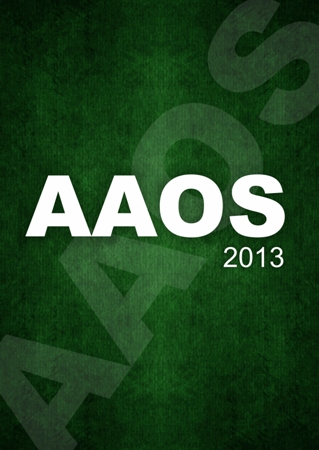
AAOS: Definitive trial on impact of ultrasound in treatment of tibial fractures feasible

AAOS: Definitive trial on impact of ultrasound in treatment of tibial fractures feasible
Trial to evaluate ultrasound in the treatment of tibial fractures (TRUST): A pilot study
Did you know you're eligible to earn 0.5 CME credits for reading this report? Click Here
OE EXCLUSIVE
Dr. Busse speaking on the impact of ultrasound treatment for tibial shaft fractures.
CONFERENCE ACE REPORTS
This ACE Report is a summary of a conference presentation or abstract. The information provided has limited the ability to provide an accurate assessment of the risk of bias or the overall quality. Please interpret the results with caution as trials may be in progress and select results may have been presented.
Synopsis
51 patients with operatively treated tibial shaft fractures were randomized to either receive low-intensity pulsed ultrasound (LIPUS) or treatment with a deactivated LIPUS device, to determine what the possibility of a definitive trial would be on assessing the impact of LIPUS on patient outcomes. After collecting over a 1 year period recruitment rates, data on patient compliance to treatment, follow-up rates, and data on investigators’ ability to follow study protocol, it was determined that this pilot study supported the probability of a definitive trial in the future.
Why was this study needed now?
Due to the nature of tibial fractures, a long recovery period is required. Low-intensity pulsed ultrasound (LIPUS) has been suggested as a treatment that may shorten the healing time. However, it is unclear as to what the impacts of LIPUS are on function. Hence, this study aimed to determine the likelihood of conducting a definitive trial in the future, which would assess the functional and clinical outcomes of LIPUS treatment on operatively treated tibial shaft fractures.
What was the principal research question?
What was the possibility of conducting a future definitive trial on the functional and clinical outcomes in patients receiving LIPUS treatment for operatively treated tibial shaft fractures, when measured over a 1 year period?
What were the important findings?
- The overall rate of recruitment for this pilot study was 0.8 patients per month, and 84% of patients (43) completed the 1 year follow-up.
- In the LIPUS group 39 patients (76%) fully complied with the use of the ultrasound device, while 12 patients (24%) displayed over 50% obedience to treatment.
- At the 6 month follow-up assessment, patients in the LIPUS group had significantly better SP-36 PCS scores (Mean difference: 6.6; 95% CI: 0.1 to 13.0; p=0.046) and HUI-III scores (Mean difference: 0.20; 95% CI: 0.01 to 0.39; p=0.035) than the Sham group.
- SMFA measures, radiographic healing time, malunion and nonunion rates, and operative and non-operative procedure rates did not differ significantly between groups.
- The tibia fractures that were at risk displayed significant hindrance in functional recovery compared to those fractures that were not at risk, at 9 and 12 months (9 months: p<0.001; 12 months: p=0.03).
What should I remember most?
High patient compliance rates and and full investigator adherence to study protocols in this study pilot supported the probability of a definitive trial in the future.
How will this affect the care of my patients?
Currently a trial with a population size of 500 patients assessing the functional and clinical outcomes of LIPUS treatment on operatively treated tibial shaft fractures is being conducted. The results of that study when completed should be able to provide clarity on the effect of LIPUS on radiographic healing time, malunion and nonunion rates, and operative and non-operative procedure rates.
Learn about our AI Driven
High Impact Search Feature
Our AI driven High Impact metric calculates the impact an article will have by considering both the publishing journal and the content of the article itself. Built using the latest advances in natural language processing, OE High Impact predicts an article’s future number of citations better than impact factor alone.
Continue



 LOGIN
LOGIN

Join the Conversation
Please Login or Join to leave comments.